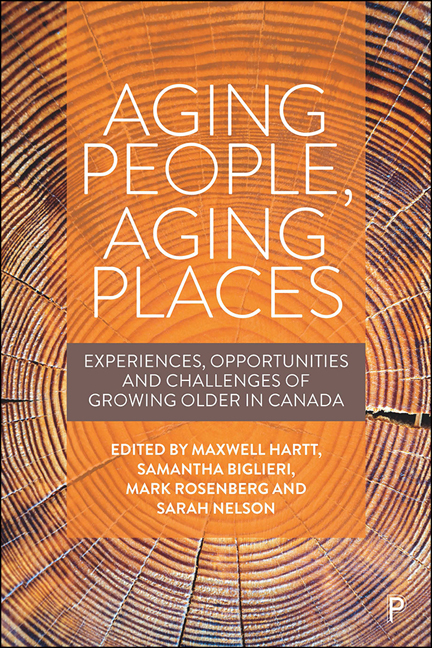2 - ‘An accessible route is always the longest’: older adults’ experience of their urban environment captured by user-led audits and photovoice
Published online by Cambridge University Press: 18 December 2021
Summary
According to propositions of the ecological model of aging (Lawton and Nahemow, 1973), the environment plays a significant role in outcomes for older persons experiencing a decline in competence, such as limitations in their cognitive and physical functioning. Other scholars have also noted that the immediate home and neighbourhood environments become increasingly important for older adults, as they are less likely to be working or have the ability to access a variety of locations in the urban environment (Glass and Balfour, 2003). As a result of health issues faced in advanced age, very old people tend to decrease their action range and spend large portions of the day at home and the ‘immediate outdoor environment’ (Oswald et al, 2010, p 238). Research showed that the physical environment close to home (two to three city blocks) has a strong relationship with mobility and social participation among older adults, especially those with mobility disability (Clarke et al, 2011; Williams and Willmott, 2012; Chaudhury et al, 2016). Lack of accessibility in urban neighbourhoods due to poorly designed public spaces may prevent older adults from fully participating in society.
Multiple studies have documented the influence of environmental factors on the mobility and social participation of older adults and people with disabilities (Rosso et al, 2011; Hanson et al, 2013; Bigonnesse et al, 2018). For instance, Rosso and colleagues (2011) proposed that within the built environment, transportation systems (eg traffic-related street characteristics or walking paths), land-use patterns (eg density, proximity of amenities), and urban design (eg aesthetics or neighbourhood decay) affected the mobility of older adults. Another recent review of the literature (Bigonnesse et al, 2018) has highlighted that proximity and accessibility of destinations facilitated mobility for mobility device (MD) users, while sidewalks and street conditions, poorly designed or absent crosswalks, and traffic congestion were barriers to the neighbourhood environment. However, although empirical research in this area is growing, there is limited knowledge about which barriers or facilitators foster or deter mobility and social participation in the neighbourhood physical and social environment by older adults using MD (Botticello et al, 2014; Clarke, 2014; Harris et al, 2015).
- Type
- Chapter
- Information
- Aging People, Aging PlacesExperiences, Opportunities and Challenges of Growing Older in Canada, pp. 27 - 44Publisher: Bristol University PressPrint publication year: 2021



